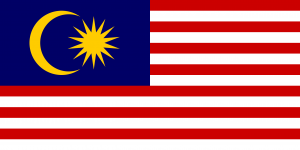Language/Malay-individual-language/Grammar/Adjectives
Hi Malay (individual language) learners! 😊 In today's lesson, we will be discussing adjectives in the Malay language. Adjectives are words that describe or modify another person or thing in the sentence. They can be used to describe the size, shape, age, color, origin, material, purpose, and other qualities of a noun or pronoun. By the end of this lesson, you should have a better understanding of how to use adjectives in Malay. Please feel free to edit this wiki page if you think it can be improved. 😎
What is an Adjective?
An adjective is a word that describes or modifies another person or thing in a sentence. It tells us more about the noun or pronoun. For example, in the sentence "The red apple is delicious," the word "red" is an adjective because it describes the noun "apple."
Adjectives can also be used to compare two or more nouns or pronouns. For example, in the sentence "This apple is bigger than that one," the word "bigger" is an adjective because it compares the two nouns "apple" and "one."
Types of Adjectives
There are several different types of adjectives that can be used in the Malay language.
Descriptive Adjectives
Descriptive adjectives are used to describe the size, shape, age, color, origin, material, purpose, and other qualities of a noun or pronoun. For example, in the sentence "The small dog barked loudly," the word "small" is a descriptive adjective because it describes the noun "dog."
Possessive Adjectives
Possessive adjectives are used to show ownership or possession. For example, in the sentence "My car is faster than yours," the word "my" is a possessive adjective because it shows ownership of the noun "car."
Demonstrative Adjectives
Demonstrative adjectives are used to point out specific people or things. For example, in the sentence "That book is mine," the word "that" is a demonstrative adjective because it points out the specific noun "book."
Interrogative Adjectives
Interrogative adjectives are used to ask questions. For example, in the sentence "Which shirt do you like best?" the word "which" is an interrogative adjective because it asks a question.
Indefinite Adjectives
Indefinite adjectives are used to refer to unspecified people or things. For example, in the sentence "I want some candy," the word "some" is an indefinite adjective because it refers to an unspecified amount of candy.
Adjective Placement
In the Malay language, adjectives usually come before the noun or pronoun they are describing. For example, in the sentence "The big dog barked loudly," the adjective "big" comes before the noun "dog."
However, there are some exceptions to this rule. For example, when using the verb "to be," the adjective usually comes after the noun or pronoun. For example, in the sentence "The dog is big," the adjective "big" comes after the noun "dog."
Conclusion
In conclusion, adjectives are words that describe or modify another person or thing in a sentence. There are several different types of adjectives that can be used in the Malay language, such as descriptive, possessive, demonstrative, interrogative, and indefinite adjectives. Adjectives usually come before the noun or pronoun they are describing, but there are some exceptions to this rule.
We hope this lesson has helped you understand how to use adjectives in the Malay language. If you have any questions, please feel free to ask them in the comments section below. Thank you for learning with us!

